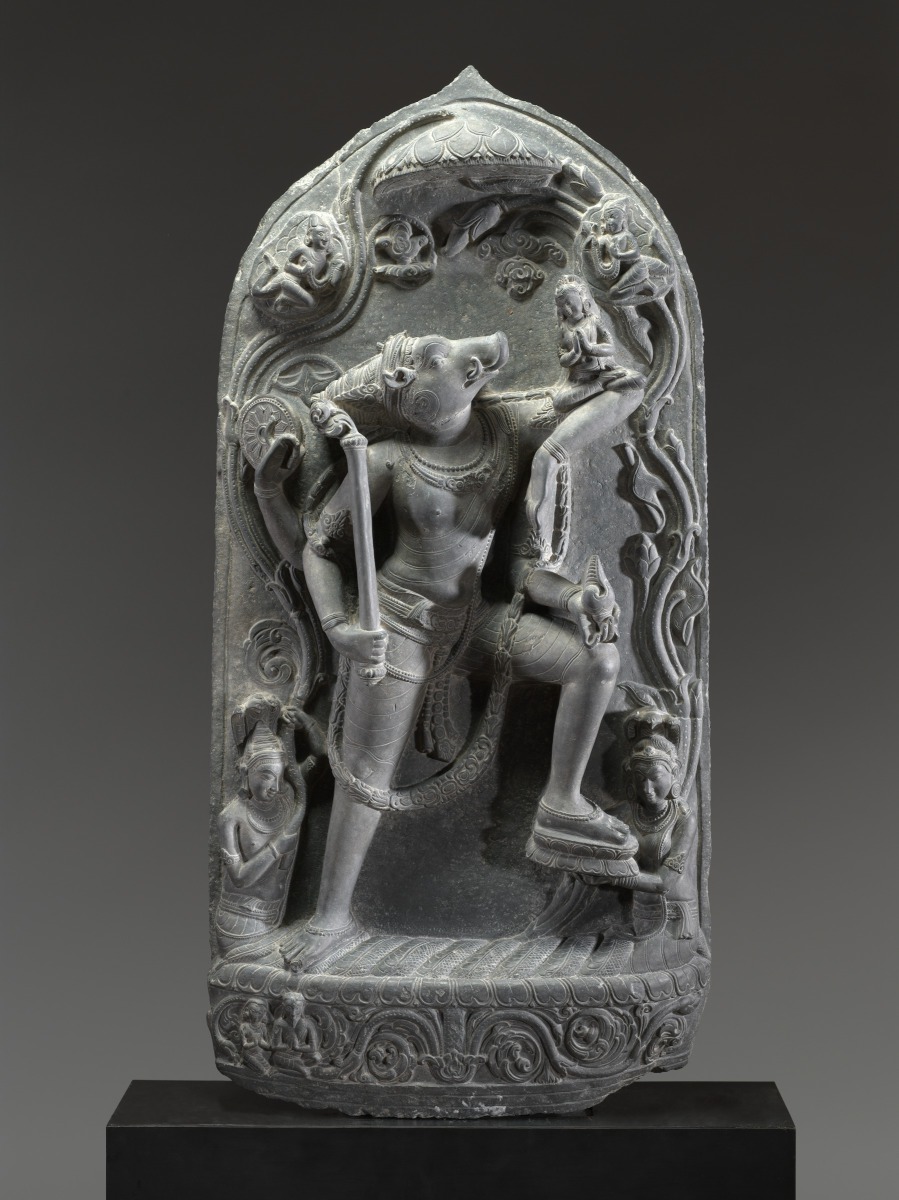
Vishnu as the Boar Avatar (Varaha) (Primary Title)
Unknown (Artist)
Vishnu, a kind and benevolent Hindu god, appears in ten principal avatars ('descents'), which he assumes to save the world from destruction. When the Goddess Earth had been taken captive by a demon and carried to the bottom of the cosmic ocean, Vishnu assumed the form of a boar (varaha) and dove to her rescue. With the head of a boar and the body of a human, Varaha is heroically posed. Having just rooted the Goddess Earth out of the cosmic mud with his tusks and placed her safely on his leftelbow, the rescuer is poised to push off from the ocean floor and return her to the surface. Their watery surroundings are evoked by meandering lotuses and the pair of serpent deities (nagas) whose tails intertwine at the bottom of the composition.These nagas - like the Goddess, the hovering celestials above, and the pair of donor figures on the sculpture's base - are shown in attitudes of devotion to the savior deity.
Adolph D. and Wilkins C. Williams Fund
"Divine Presence: Arts of India and the Himalayas," Casa Asia, Barcelona, 2003.
Image released via Creative Commons CC-BY-NC
Some object records are not complete and do not reflect VMFA's full and current knowledge. VMFA makes routine updates as records are reviewed and enhanced.

